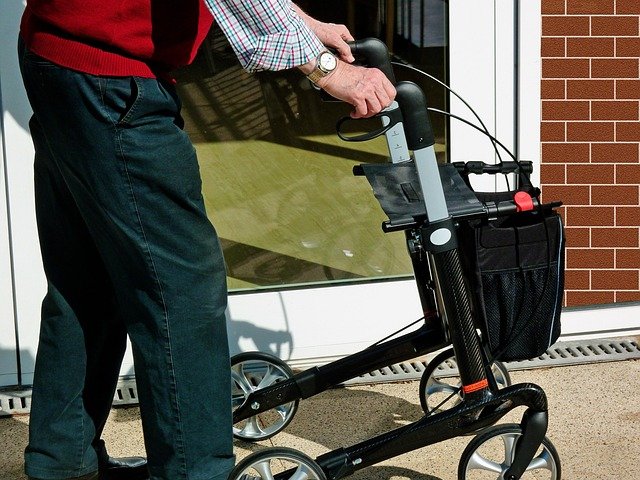Choosing the Right Mobility Aid for an Aging Parent
Mobility aids can significantly enhance independence for seniors. From canes and walkers to rollators and scooters, there's a wide range of tools available. Choosing the right aid depends on mobility level, lifestyle, and home setup. Comfort and safety matter most.

What are the most common mobility aids for seniors?
Mobility aids for seniors come in various forms, each designed to address different levels of mobility and support needs. Some of the most common types include:
-
Canes: These simple yet effective devices provide balance and support for those with minor mobility issues. They’re lightweight, portable, and easy to use.
-
Walkers: Offering more stability than canes, walkers provide support on both sides. They come in standard and rollator versions, with the latter featuring wheels for easier movement.
-
Wheelchairs: For seniors with significant mobility limitations, wheelchairs offer a reliable means of getting around. They come in manual and electric varieties to suit different needs and abilities.
-
Scooters: Electric scooters are ideal for seniors who can sit upright but have difficulty walking long distances. They offer independence and are suitable for both indoor and outdoor use.
-
Stairlifts: While not portable, stairlifts are essential mobility aids for seniors living in multi-story homes, allowing safe and easy access between floors.
How do I assess my parent’s mobility needs?
Choosing the right mobility aid for an aging parent starts with a thorough assessment of their needs. Consider the following factors:
-
Level of mobility: Observe how well your parent can walk, stand, and balance on their own. Do they struggle with certain movements or tire quickly?
-
Home environment: Evaluate your parent’s living space. Are there stairs, narrow doorways, or other obstacles that might impact the use of certain mobility aids?
-
Lifestyle and activities: Consider your parent’s daily routines and the activities they enjoy. Do they need a mobility aid primarily for indoor use, or do they require something suitable for outdoor adventures?
-
Physical strength and dexterity: Assess your parent’s ability to operate different types of mobility aids. For example, can they safely maneuver a walker or grip a cane handle?
-
Medical conditions: Take into account any existing health issues that might affect mobility or the use of certain aids.
What safety features should I look for in mobility aids?
When selecting safe and reliable mobility aids for older adults, pay attention to these important safety features:
-
Non-slip grips: Ensure handles on canes, walkers, and rollators have comfortable, non-slip grips to prevent accidents.
-
Adjustable height: Look for mobility aids with adjustable heights to ensure proper fit and posture for your parent.
-
Sturdy construction: Choose aids made from durable materials that can withstand daily use and support your parent’s weight.
-
Brakes: For wheeled aids like rollators and scooters, ensure they have reliable braking systems for safety on slopes or when stopping.
-
Weight capacity: Verify that the mobility aid can safely support your parent’s weight.
-
Foldability: If storage or transportation is a concern, look for foldable options that are easy to manage.
-
Anti-tip features: For wheelchairs and scooters, anti-tip mechanisms provide added stability and prevent backward falls.
How can I ensure my parent adapts to their new mobility aid?
Introducing a new mobility aid to your aging parent requires patience and support. Here are some tips to help with the transition:
-
Involve them in the selection process: Let your parent try different options and express their preferences.
-
Provide proper training: Ensure your parent receives thorough instructions on how to use the mobility aid safely and effectively.
-
Start slowly: Encourage your parent to use the aid for short periods initially, gradually increasing usage as they become more comfortable.
-
Make home modifications: Adapt the living space to accommodate the new mobility aid, such as widening doorways or installing ramps.
-
Regular check-ins: Monitor your parent’s progress and address any concerns or difficulties they may experience.
What are some reputable brands for mobility aids?
When shopping for mobility aids for seniors, it’s essential to choose reliable and well-established brands. Here’s a comparison of some reputable mobility aid providers:
| Provider | Types of Mobility Aids | Key Features |
|---|---|---|
| Drive Medical | Walkers, rollators, wheelchairs, scooters | Wide range of products, affordable options, durable construction |
| Medline | Canes, walkers, wheelchairs, bathroom safety | High-quality materials, ergonomic designs, extensive product line |
| Pride Mobility | Electric scooters, power wheelchairs | Advanced technology, customizable options, comfortable seating |
| Invacare | Wheelchairs, walkers, bathroom safety | Innovative designs, focus on user comfort, variety of models |
| NOVA Medical Products | Walkers, rollators, transport chairs | Lightweight options, foldable designs, vibrant color choices |
Prices, rates, or cost estimates mentioned in this article are based on the latest available information but may change over time. Independent research is advised before making financial decisions.
Selecting the right mobility aid for an aging parent is a significant decision that can greatly improve their quality of life. By carefully assessing their needs, considering safety features, and choosing reputable brands, you can help your parent maintain independence and confidence in their daily activities. Remember to involve your parent in the decision-making process and provide ongoing support as they adapt to their new mobility aid.
This article is for informational purposes only and should not be considered medical advice. Please consult a qualified healthcare professional for personalized guidance and treatment.




